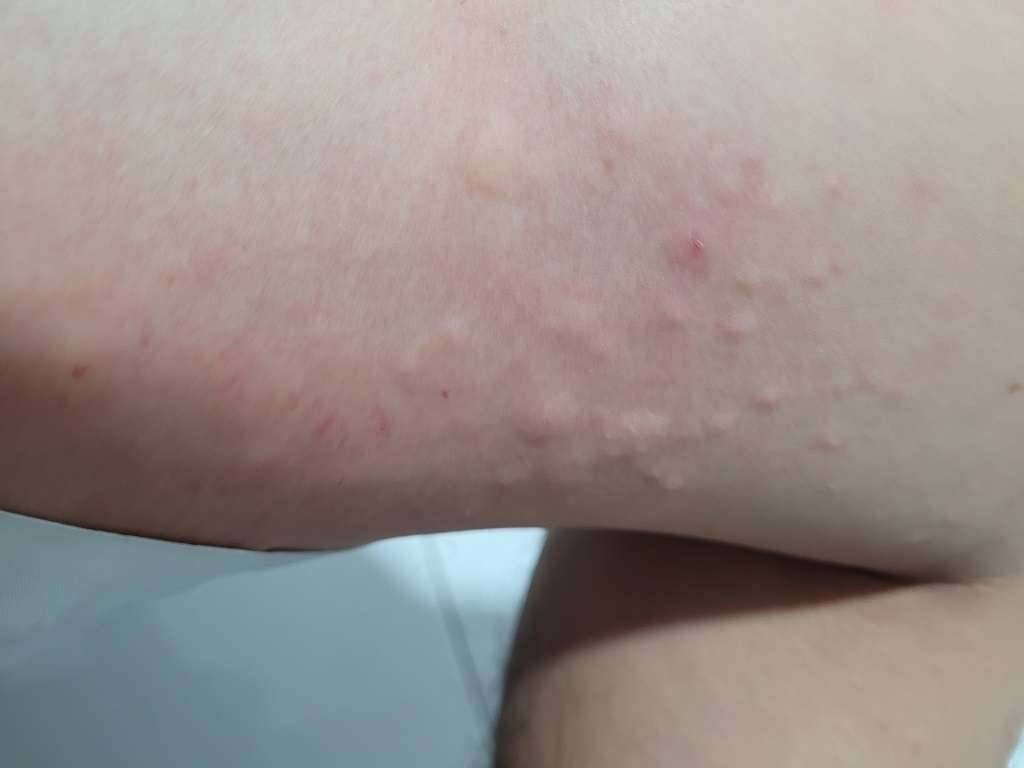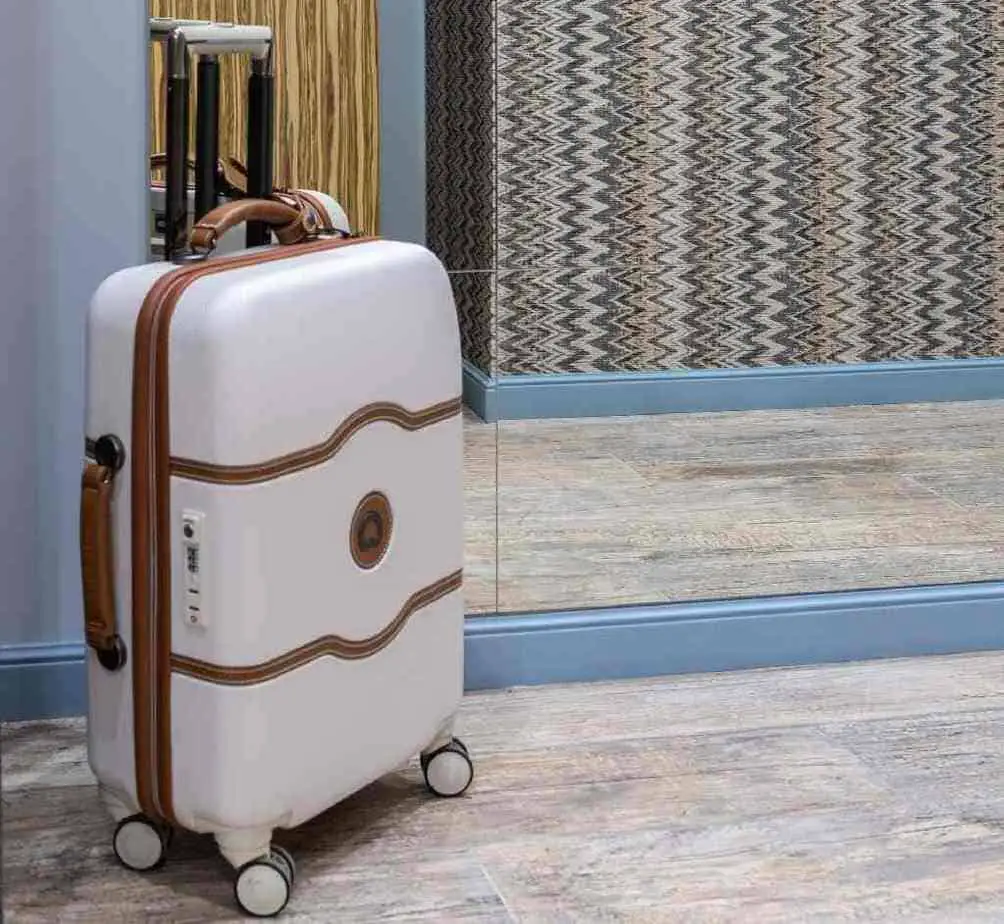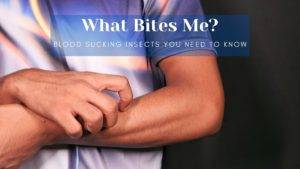Among the many photos I’ve received from customers, one recurring theme is the image of welts on their bodies accompanied by the question, “What bit me?” If you find yourself pondering the same query, I may have some insight to offer.
Identifying the source of your bites based solely on the welts can be challenging. People react differently to various bites, making it difficult to pinpoint the exact culprit. However, you can narrow down the possibilities by considering factors such as the location, timing, and bite patterns associated with the bites.
Continue reading to understand more.
Why Can’t I Feel the Bite?

The question of “what bites me” often arises when the presence of a bite is discovered after the culprit has departed, be it during sleep or awake.
Blood-sucking insects, while biting, inject anesthetics into their hosts to prevent the sensation of being bitten. This enables them to feed on blood uninterrupted. Hence, most bites happen without being noticed.
Reactions towards Insect Bites
When insects bite to obtain a blood meal, their saliva containing antigens enters our bloodstream. This triggers our immune system, leading to the formation of welts through a complex series of reactions.
Different individuals exhibit varying responses to the same type of bite. Young children often display greater sensitivity, resulting in larger welts compared to older individuals. Those frequently exposed to bites tend to develop lower sensitivity compared to those infrequently bitten.
Determining the Culprit
While identifying the biting insect solely based on the welt is challenging, there are other clues that can aid in narrowing down the possibilities. By considering these various factors, you can gather valuable clues to help unravel the mystery of “what bites me.”
While you cannot determine what bites you by looking at the welt alone, there are several other clues that you can look at.
Time of Bite
Biting insects may be active during the day or night, depending on the species. Bed bugs and sand flies, for example, bite primarily at night, whereas Aedes mosquitoes and black flies bite during the day.
Geographical Location
Certain biting insects are more prevalent in specific geographic regions. Kissing bugs, for instance, are primarily found in the southern United States. Your location can help exclude certain biting insects from the list of suspects.
Surrounding Environment
Consider your surroundings when bitten. Were you indoors, in a park, or near a body of water? Different biting insects inhabit distinct habitats, making it crucial to note the environment in which the bite occurred.
Seasonality
Many insects exhibit seasonal activity patterns. Mosquitoes, for example, enter diapause (hibernation) during winter, while fleas and bed bugs can still bite. If you experience bites during winter, mosquitoes, sand flies, or biting midges are less likely to be the cause.
Bite Patterns
Distinct biting insects often leave characteristic bite patterns. Mosquito bites tend to be random, while bed bug bites are often concentrated in specific areas of the body. Kissing bugs commonly bite around the mouth, and pubic lice typically target the pubic area.
Common Insects that Bite for Blood Meal
Below are the common insects that bite for blood meal below for your reference. Hopefully, this helps you find out what bites you. Those capable of inflicting painful bites, such as stable flies, are not included because you would have noticed them the moment they bite.
| Biting Insects | Biting hour | Found at | Bite preference/characteristics |
|---|---|---|---|
| Mosquito | Day or Night | Anywhere indoor and outdoor | Randomly on any exposed skin |
| Sand Fly | Night | Usually in rural areas | Randomly on any exposed skin |
| Black Fly | Day | Close to river | Randomly on any exposed skin |
| Kissing Bug | Night | Southern US | Tend to bite on faces |
| Bed Bug | Night | Home, hotel and dorms | Bites tend to cluster on a few spots on the upper body |
| Flea | Day and Night | Cat, dogs, rats, rabbits, homes, hotels and dorms | Bites tend to cluster on legs |
| Tick | Day and night | Animals and outdoor vegetations | Tend to bite behind ears, behind neck, under armpit, behind knees |
| Louse | Day or Night | Homes and dorms, on human | Bites tend to cluster on head (head lice), pubic (pubic lice), or other body parts (body lice) |
| Biting Midges* | Day or Night | Outdoors | Depends on species |
**Day and night means those insects bite all day; Day or night means they bite either day or night depending on species.
If you are facing issues with those biting insects at home, check out my blog to learn how to get rid of them!
How to Relieve Insect Bite Itch?
There are many home remedies and products that you can use to relieve the itchiness from insect bites. Here are some home remedies I’ve tried before.
- Cold bag/Ice
Applying a cold bag or ice on where you are bitten can quickly relieve itchiness, temporarily. Remove the cold bag/ice immediately if you start feeling pain, to avoid hurting your skin.
- Hot water
Fill a bottle with hot water and gently press it against the bite site. Take caution not to burn your skin and ensure the water temperature is tolerable.
- Aloe Vera
If you have an aloe vera plant at home, cut a small portion of the leaf and extract the gel-like substance. Apply the gel directly to your skin. Alternatively, commercially available aloe vera gel can also be used.
- Essential Oil
Essential oils like tea tree oil, mint oil, lavender, lemon balm, and others can offer relief from insect bite itch. Apply a small amount to the affected area, making sure to avoid contact with your eyes to prevent irritation. Note that some essential oil can cause skin irritation. Use it with care.
Bug Bite Thing
For a non-chemical and effective solution to reduce itchiness, consider giving Bug Bite Thing a try.
Bug Bite Thing is a compact handheld tool designed to extract allergens injected by biting insects. By removing these allergens, it helps alleviate itching and pain, as these sensations are our body’s response to the allergens. With Bug Bite Thing, you can focus on your activities without constantly scratching and risking secondary infections.
It’s important to note that this device may leave a temporary mark on your skin, which will heal on its own. This minor side effect is a small trade-off for the quick relief it provides. However, it’s advisable to avoid using Bug Bite Thing on your face if you have concerns.
How to Prevent Insect Bites
To avoid insect bites, take preventive measures such as applying skin repellents and wearing appropriate clothing when venturing outdoors. If you have pets, it’s crucial to protect them from ticks and fleas. Additionally, be vigilant when travelling so that you don’t bring back blood-sucking pests.
By following these preventive measures, you can significantly reduce the likelihood of insect bites and the associated inconveniences they bring.
Utilize Skin Repellents
For robust and long-lasting protection during activities like camping, hiking, or trekking, I suggest using Off! Deep Woods, which contains DEET, a trusted repellent.
Alternatively, Ranger Ready Picaridin Repellent offers 8-12 hours of protection against various biting insects for those seeking a non-DEET option. For lighter outdoor pursuits like dining or park visits, Off! Botanical Insect Repellent with PMD, derived from lemon eucalyptus oil, is suitable.
Protect Your Pets
Cats and dogs can carry ticks and fleas, exposing your home to blood-sucking pests. Ensure your pets wear tick and flea collars, such as Seresto. Seresto releases pesticide over 8 months, providing effective control and fast knockdown of pests. This veterinarian-recommended product is safe for cats and dogs.
Prevent Bringing Home Blood-Sucking Pests
Hotels, hostels, and dormitories pose a higher risk of bed bug infestations. Take precautions to avoid bringing these pests home. Inspect your luggage thoroughly for any signs of bed bugs. Upon returning home, wash all your clothes at temperatures of 140 °F for 30 minutes or 131 °F for an hour to eliminate any potential bed bugs that may have infiltrated your garments.
Take Care of Your Pets

Cats and dogs are common carriers of blood-sucking pests, such as ticks and fleas. They can bring back those vampires if you let them go outdoors.
The most effective prevention method is to use a tick and flea collar, such as Seresto. Seresto contains imidacloprid and flumethrin, which are slowly released across 8 months. The former is meant for killing, while the latter is for fast knockdown. This product is recommended by many vets, as it is safe for cats and dogs.
Manage Risk of Bringing Back Blood Suckers

Hotels, hostels, and dorms are high risk areas where bed bugs can be found. You might bring home blood-sucking bed bugs if where you stay is infested. Be vigilant when staying outside, so that you don’t bring home those suckers.
Always check your luggage for any bed bugs. If possible, wash all your clothes at 140 °F for 30 minutes or 131 °F for an hour after you reach home. This will kill any bed bugs that might have infiltrated your clothes.



